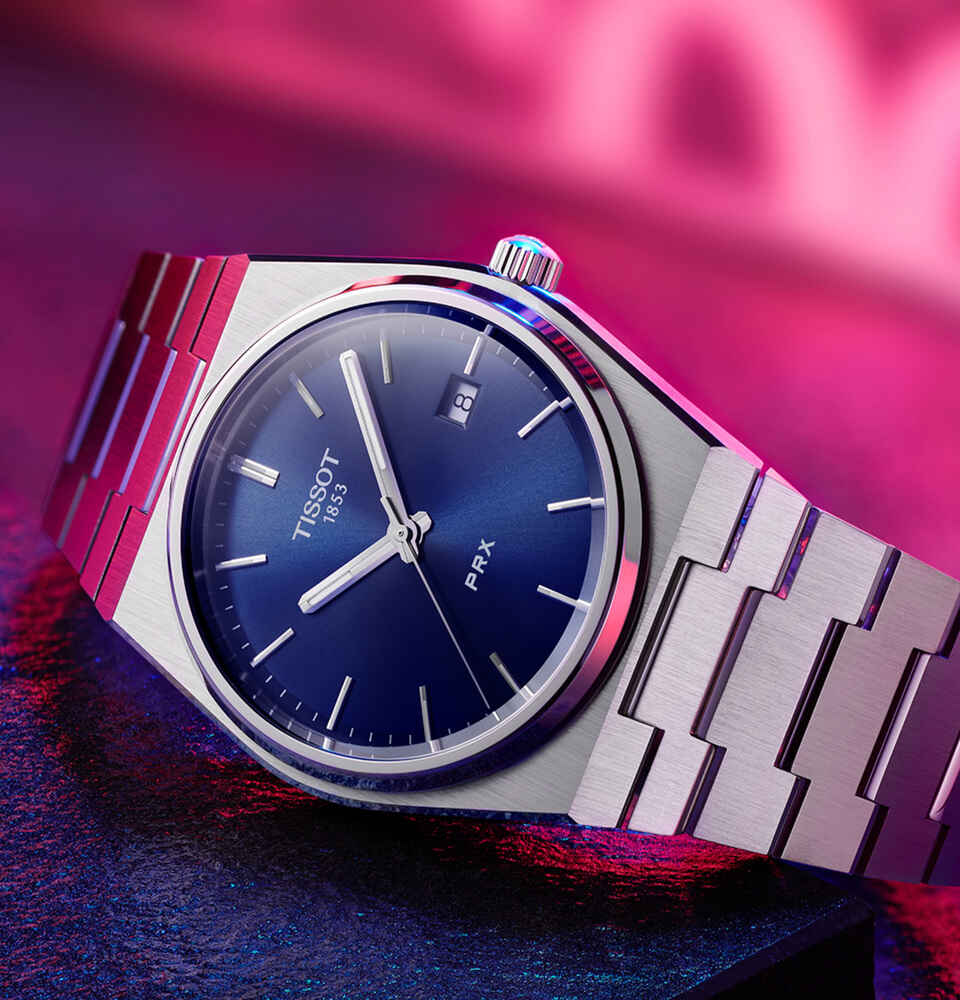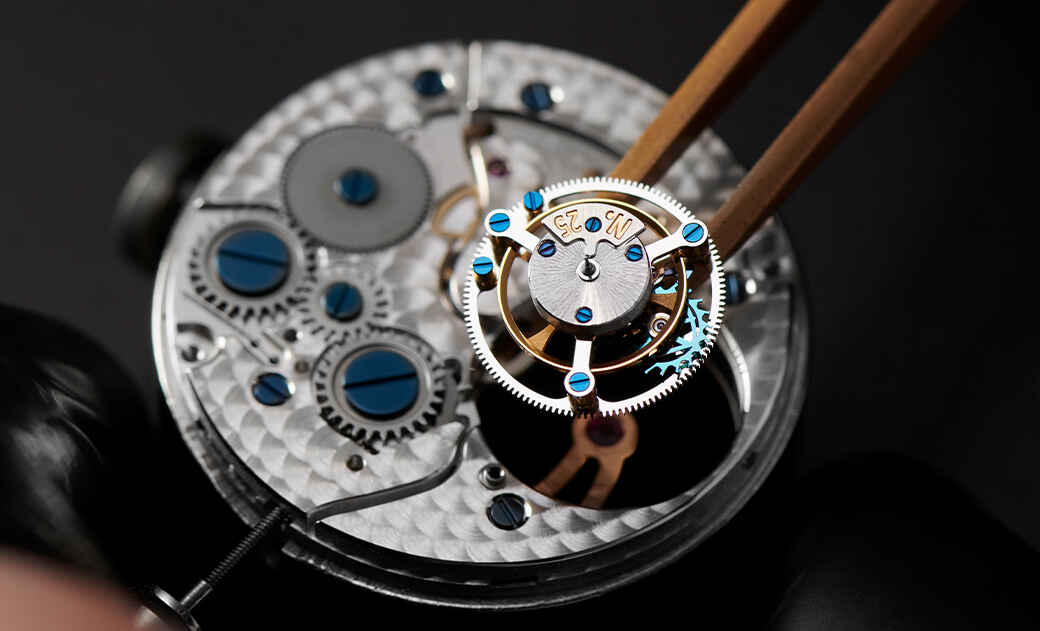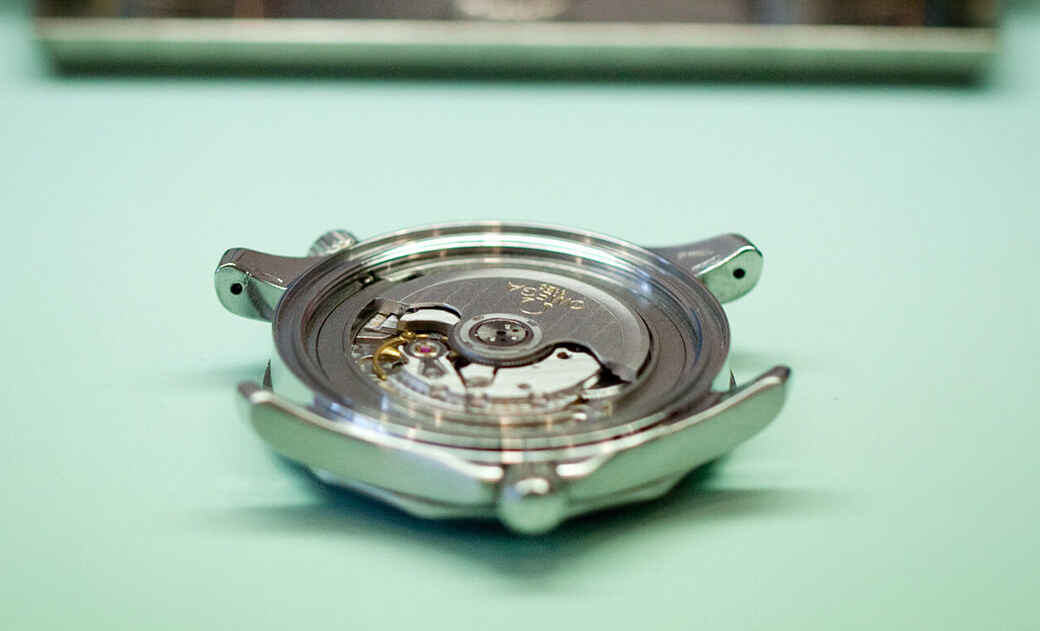Everything about quartz watches and how they work
While the hands of automatic watches are made to tick by a complex mechanism without any electronic drive, this task is performed by a battery in quartz watches. It is the source of energy and ensures movement in the movement. Put simply, a quartz watch works like this: the battery supplies energy to small gears, setting them in motion. These in turn are connected to the hands on the dial, which are ultimately set in motion and make the watch run. But why does a quartz watch run so accurately? And which part of the movement regulates the accuracy?
The answer to these questions leads us to the eponym of the watches: The quartz. More precisely, a small quartz crystal shaped like a tuning fork that sits in a small housing inside the movement. It is the clock generator of the clock and ensures that the energy of the battery is passed on to the hands only to a regulated extent. For this purpose, the quartz crystal and battery are connected by a common part. In most quartz watches, this is the "stepper motor". It offsets the impulses of the quartz crystal with the energy of the battery, passes this "throttled" on to the gear train and thus ultimately sets the watch hands in motion - and that precisely in time.
The size and shape of the crystal determine the frequency at which the oscillations occur. In wristwatches, a standard number of 32,768 oscillations per second has been agreed upon. This number of oscillations was not set arbitrarily, but has the advantage that exactly one pulse per second can be transmitted to the stepper motor. This sets the second hand in motion and is connected to the other hands. Depending on the model, the quartz crystal also sends switching pulses directly to a counter, which displays the time on a digital display. The counter is a small calculating machine that encodes the pulses into the time.
Quartz is the most abundant material in the earth's crust after feldspars. The resources are large. In industry, quartz is therefore not only processed into oscillating quartz for watches, but also used as a building material or raw material for ceramic, glass or cement products. Quartz is also very popular as a jewelry stone, because agate, amethyst, citrine, onyx or jasper also belong to quartz. Breathtaking jewelry with colored stones can be found in our online store and in our collections Royal and Felicity.
The oscillating crystals for watches are usually made synthetically and shaped into a special form. Even though the technology has become more and more refined, the basic principle of a quartz watch has remained the same to this day. In the meantime, there are also quartz watches that are driven by a spring, similar to an automatic movement. Of course, the rate is still controlled by a quartz crystal.
Of course, the battery of a quartz watch does not last forever either. It must be replaced at regular intervals. The service life of a battery depends to a large extent on its use and quality. As a rule, you will have to change it every three to seven years for high-quality quartz watches. Watches in the lower price segment are often stored with battery, so that you run the risk as a buyer to buy a half-empty watch.Unfortunately, there are hardly any ways to save the battery. Although the recommendation circulates to "switch off" the quartz watch when it is not worn, by pulling out the crown and thus bringing the hands to a standstill. However, this procedure is not recommended, especially for high-quality quartz watches. On the one hand, pulling the crown only switches off the stepper motor and not the entire electronics. Therefore, the power consumption is at most reduced and not completely stopped. Furthermore, on some watches with a pulled crown, dirt and dust can get into the movement. The consequence can be the leakage of the battery and thus the total loss of an expensive watch in the worst case.
The development of the first quartz watch is mostly attributed to the Canadian-American inventor Warren Alvin Morrison, who worked as a radio technician during World War I. The quartz watch was developed in 1929. His quartz watch from 1929 was already more accurate than the mechanical watches invented much earlier. However, it sometimes exhibited gross fluctuations at different temperatures. A phenomenon that many quartz clocks initially struggled with. It is rooted in the fact that particle motion is significantly influenced by temperature and thus causes deformation of the quartz. In the meantime, common quartz movements can withstand temperatures from -10°C up to 40C° without showing significant fluctuations in accuracy.
The first quartz wristwatch ready for mass production was developed in 1969 by the Japanese watch manufacturer Seiko. A year later, the German watch manufacturer Junghans launched the Astro-Quartz, the first German quartz wristwatch. In 1976, Omega produced the first watch that protected its sensitive electrics from water. Omega's "Seamaster" line continues to this day. Omega set another highlight in 1980 with the "Dinosaure", which was the world's thinnest quartz watch at 1.46mm tall.








